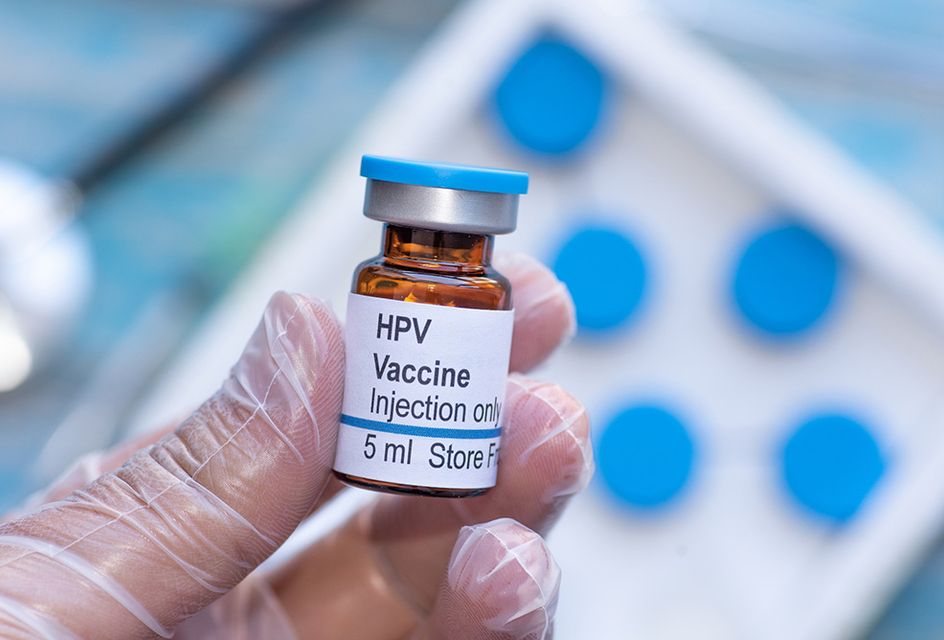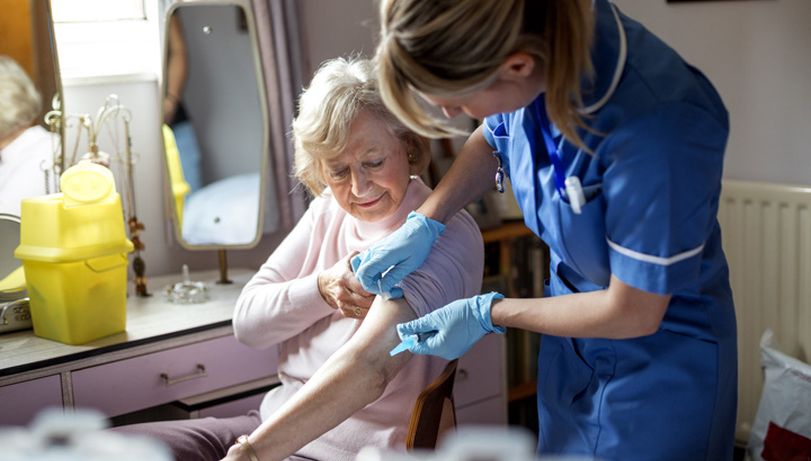The Top 10 Public Health Achievements of the 21st Century
Author: RSPH 20 August 2025 1 min read
A lot has changed over the past 25 years. In this list, we list some of key public health initiatives that have changed lives across the globe.

Successful public health interventions have changed our lives for the betetr. From water infrastructure to the eradication of smallpox , these achievements have helped us live healthier and longer lives.
In the past quarter of a century, the world has faced some extremely difficult public health challenges, such as the Ebola outbreak in Western Africa and the Covid-19 pandemic. We also witnessed scientific advances and legislative changes that led to improvements in public health interventions.
Here are some of the most impactful achievements and interventions of the past 25 years in the UK, and why they helped change our lives.
Top 10 public health achievements 2000 - 2025
PrEP
Short for Pre-exposure prophylaxis, PrEP is a combination of drugs used to reduce the risk of getting HIV (human immunodeficiency virus). First rolled out in the UK in 2020, data from UKHSA shows that in 2023, over 95,000 people were taking PrEP. Highly effective, PrEP is considered to be revolutionary because it prevents HIV from getting into people’s body and replicating, therefore protecting thousands of people from getting infected with HIV.
New vaccines
Despite having been invented over 200 years ago, there are numerous new achievements in the vaccine realm. New vaccines to old diseases, such as Malaria, Dengue fever and Chikungunya, were developed, diminishing the burden of disease to people who live or visit areas of endemic transmission.
In 2021, new evidence showed that the HPV vaccine programme, rolled out in September 2008 for girls and September 2019 for boys in the UK, had an enormous impact. This immunisation programme almost eliminated cervical cancer in women born after 1995.
Another key development is vaccines using the messenger RNA (mRNA) technology. Discovered in the 1960s, research with mRNA was already happening in the 1980s, but it was in the 2001-2020 period that its potential for use to induce an immune response to illnesses was fully understood. When the world worked together to produce a vaccine that could protect humanity from Covid-19 and bring the pandemic to an end, it was the mRNA technology that helped save millions of lives.
Marmot review into health inequalities
Published in 2010, the report Fair Society, Healthy Lives demonstrated that social inequalities and health inequalities are connected. To improve health outcomes for all people, changes need to be made to social determinants such as education, employment, transportation and housing.
This report was groundbreaking as it highlighted that prevention of ill health goes beyond the NHS: it involves ensuring all people are born, grow and work in conditions that help them thrive. Since then, a lot has been done to understand how tackling deprivation can improve health outcomes, particularly with underserved communities.
Smoking regulations
A lot happened in this quarter of a century to support people who want to quit smoking, and to prevent younger generations from getting addicted to nicotine.
Legislations such as the Tobacco Advertising and Promotion Bill (banning tobacco advertising in the UK) or the Health Act 2006 (banning smoking in enclosed public spaces and workplaces) helped protect people from tobacco harms, while the introduction of smoke cessation programmes and nicotine replacement therapies supported those who wished to quit.
It is understood that the Tobacco Advertising and Promotion Bill alone could have saved 3,000 lives a year. At the moment, the UK Parliament is discussing the Tobacco and Vapes Bill, which aims to ban people born on or after 1 January 2009 from buying tobacco legally and regulate vapes further.
Viral hepatitis prevention and management
The UK has made relevant efforts to meet the World Health Organisation’s Global Health Sector Strategy on Viral Hepatitis, which is, in a nutshell, a plan to eliminate viral hepatitis as a public health threat by 2030. In August 2017, the country introduced the 6-in-1 vaccine as part of the routine childhood immunisation schedule. This vaccine protects babies against six diseases, including diphtheria, tetanus, whooping cough and hepatitis B.
Regarding hepatitis C, the UK rolled out prevention of infection and harm reduction programmes for populations at risk. Also, in 2017, the country scaled up the use of direct-acting antiviral (DAA) medicines, a new medication that revolutionised hepatitis C treatment by interfering with the virus's ability to multiply itself. As a result, the number of people living with the condition dropped sharply by 56.7%.
Incentives for healthier food consumption
One of the roles of public health is to create environments that encourage and allow people to make healthier choices. This includes sharing more information about the food they are buying. Ideas such as the traffic light labelling on pre-packaged food do exactly this. Introduced by the Government in 2013, this labelling discloses clearly information on calories, fat, saturated fat, salt and sugar present in pre-packaged food. This informs people on the nutritional value of what they are buying, helping them make healthier choices.
Another change was the Soft Drinks Industry Levy, also known as ‘sugar tax’. Introduced in 2018, the idea of this levy was to charge a levy on manufacturers producing drinks with a predetermined amount of sugar. This was part of the Government’s strategy to tackle childhood obesity.
A study led by the University of Cambridge with participation of the London School of Hygiene and Tropical Medicine estimated that daily consumption of sugar fell by almost 5g per day for children and almost 11g for adults because of this levy.
A final example is the Minimum Unit Pricing per unit of alcohol. The idea is to create a minimum price below which alcohol cannot be sold. The Alcohol (Minimum Pricing) Scotland Act 2012 and The Public Health (Minimum Price for Alcohol) (Wales) Act 2018, both paved the way for the introduction of a 50p per unit of alcohol. In Scotland, the act was associated with a 3.5% reduction in off-trade alcohol sales.
Improved support for Women’s health
Despite the slow pace, positive changes have taken place in the last 25 years to improve women's quality of life. For example, the 2024 Employment Rights Bill included enhanced support in the workplace for women going through menopause. The Women’s Health Strategy for England set a list of priorities for women’s healthcare, including more health hubs, better access to contraception and more investment in research.
Abortion in Northern Ireland was decriminalised in October 2019, allowing women and healthcare professionals to terminate a pregnancy without risk of prosecution. And the availability of early medical abortion tablets taken at home, a measure initially rolled out during the Covid-19 pandemic on a temporary basis, was made permanent in 2022 in England and Wales. This means that women can access pills for early medical abortion via a teleconsultation and have them at home.
Enhanced clean air policies
Introduced in London in 2003, the congestion charge aimed at cutting the number of vehicles entering the capital. In 2019, this was taken a step further with the introduction of the ultra-low emission zone (ULEZ), areas where vehicles that do not meet certain emissions standards need to pay a charge. Overall, they have been successful interventions, with congestion reduced by 30%, and the ULEZ leading to substantial emissions reductions.
Clean air zones were also introduced in Bath, Birmingham, Bradford, Bristol, Portsmouth, Sheffield, and Tyneside after the Transportation Act 2000 allowed local authorities to charge road users. Scotland also introduced low-emission zones in 2022 in Glasgow, Edinburgh, Dundee and Aberdeen, and started enforcement in 2023/24.
The Government published in 2019 a Clean Air Strategy that outlined how to improve air quality in the UK. Besides environmental protection and economic growth, the Strategy clearly linked air quality to heart disease, diabetes, and dementia, and showed that health and social care costs of air pollution in England could reach £5.3 billion by 2035. The strategy empowered local authorities to deliver on air quality improvements, and since then, many have developed their own clean air strategies.
Improvements in Mental Health
A lot has changed in mental health support in the last quarter of a century, in part due to efforts to better understand mental health conditions and offer better support. The National Institute for Health and Care Excellence (NICE), for example, has since 2002 published over 80 guides for mental health, which include guidance for public health and wellbeing approaches. The Government is at the moment working on a new Mental Health Bill, aiming at increasing people’s autonomy and rights.
Another impactful change was the use of the Make Every Contact Count (MECC) approach to mental health. MECC is a simple approach that considers opportunistic conversations to offer information and guidance. Evaluation of MECC has shown that it has not only increased support available to those who need it, but also reduced stigma and increased awareness.
Transfer of Public Health into Local Authorities
Public health programmes should address the needs of the community. Having these programmes planned, designed, delivered and evaluated by Local Authorities means that those who understand local needs the most are working on projects to tackle local public health issues. This is why the transfer of public health into local authorities was so crucial.
The Health and Social Care Act 2012 set out that public health was to be delivered by local authorities instead of the NHS, and these local governments were also set to receive ring-fenced funding to offer public health services in their area. Unfortunately, in the past 10 years, the public health grant was cut by 26% in real terms, presenting a challenge for local authorities and the delivery of much-needed public health services.
However, this does not change the fact that Local Authorities are best positioned to deliver public health, as they can build key partnerships with community stakeholders and combine work from other areas, such as town planning, education and housing, to ensure that the area where we live positively influences our health outcomes.



